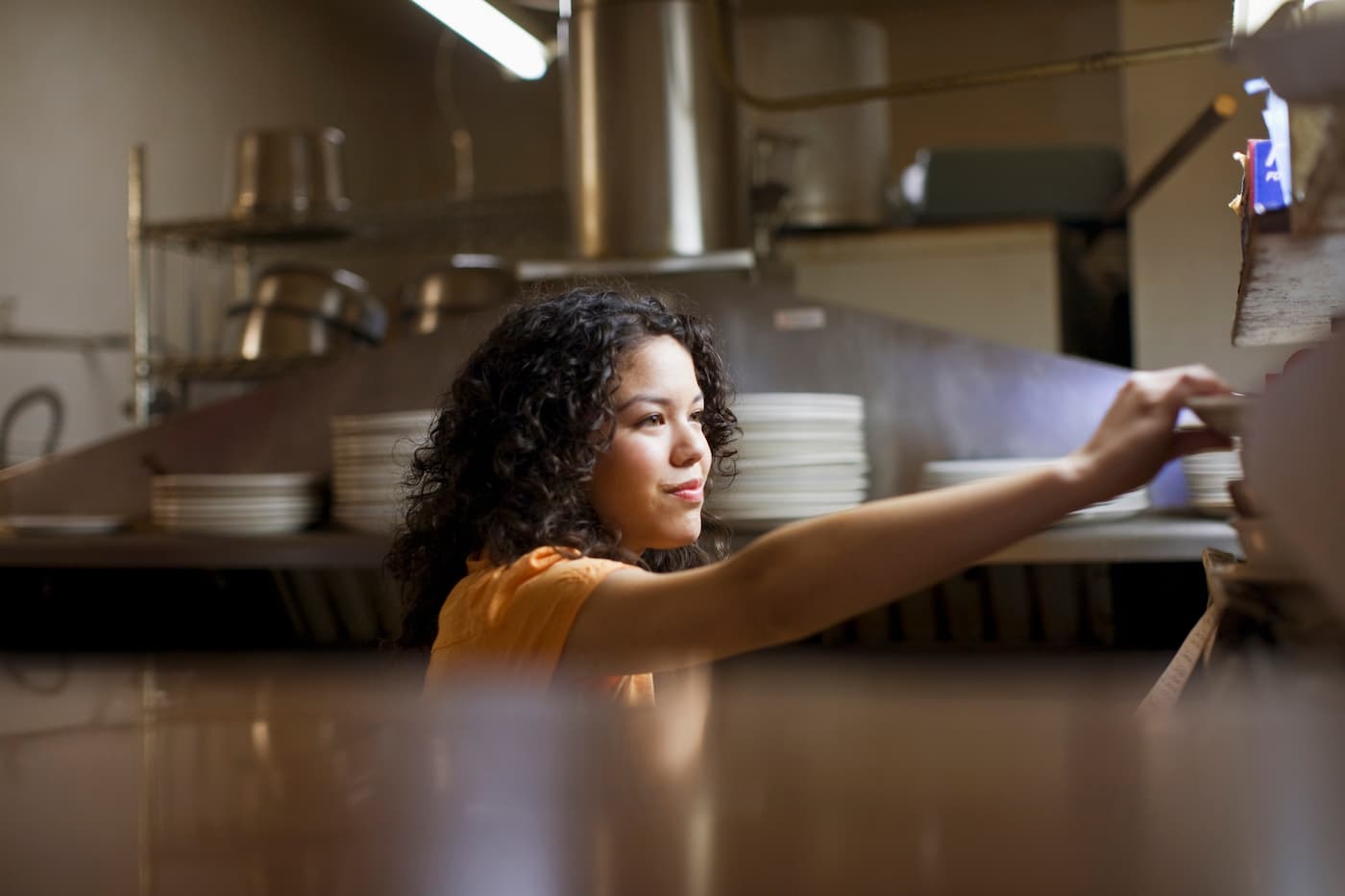While their jobs might differ, everyone should be working toward the same purpose: to see the restaurant succeed, work in a positive environment, and create an experience everyone can be proud of. But sometimes ideas for how to get there can differ among the disparate teams responsible for making a restaurant work. Although the lines are sometimes blurred, these teams are normally divided into front of house versus back of house (FOH vs. BOH).
Front of house vs. back of house in restaurants
Restaurant front of house broadly applies to everything diners might see during their meals, such as wait staff, dining areas, and bars. Restaurant back of house applies to all the operational components kept out of sight: e.g., food prep staff, kitchens, storage, admin offices, lines, and employee break rooms.
Without a flow of communication and procedures in place, the front of the house where customer engagement happens, and back of house where the “product” is literally being cooked up, can be on two different pages, making the entire restaurant operation seem disconnected and unorganized. To ensure a steady flow and a positive experience, there are a few things that front and back of house need to agree on and protocols that need to be put in place.
Agreeing on the “catch”
Every restaurant serves a specific need and has its own unique concept. In order to ensure restaurant success, the kitchen and the dining room must be unified on the overall concept of the establishment. Once the concept is developed and agreed upon, restaurants should convey the message consistently across all channels including:
Connecting point-of-sale to back-of-house
POS systems have many functions that can strengthen communication between front and back of house. However, restaurants must know what these tools are, and agree between the front and the back how they will use their POS system to communicate.
Tools such as the Clover Kitchen Display System (KDS) or the Kitchen Display App, which is available in the Clover App Market, allow users to send orders submitted through the Clover Register or Tables app directly to the kitchen. The app allows orders to be routed based on preparation location and/or order type. If an order is late, the app will send an indication, allowing everyone to be on the same page about orders and their status.
Getting on the same page about the menu
One of the most important points of communication between front of house and back of house is about the restaurant menu. First and foremost, servers have to be knowledgeable about the menu, and the kitchen needs to keep service staff informed. The kitchen and the dining room have to be on the same page about what the menu items are, which allergens to be aware of, and which items can be substituted.
Oftentimes, restaurant communication snafus can occur when servers try to make substitutions or adjustments to a dish that the kitchen cannot accommodate. The kitchen staff must make sure that servers know exactly which substitutions are possible and how to communicate that to the kitchen during service.
Communicating inventory status
Managing inventory of restaurant goods often falls on the shoulders of the kitchen staff. However, letting diners know when a menu item is unavailable falls into front of house staff restaurant duties. As such, your kitchen must have a way to communicate inventory management information to the service staff.
Many restaurants accomplish this using back of house cloud-based tools such as SimpleOrder. Back of house management tools give anyone with access to the system a bird’s eye view of kitchen activity, from purchasing to menu pricing to exact inventory counts. This way, the general manager has access to inventory data and can view any shortages. The more transparent inventory is across all channels, the more likely that nothing will be overlooked and staff will be alerted.
Quality control and performance tracking
The point of unifying the front and back is to provide a consistent dining experience that earns you more customers and repeat business. To do this, however, you must actively manage this union with quality control.
This includes:
- Testing which tools and workflows provide the most effective communication between kitchen and restaurant staff. For most restaurants, these will include cloud-based software solutions that provide every team member with real-time data about orders, inventory, and updated pricing.
- Employee training so everyone understands their roles and responsibilities. Effective restaurant staff management also requires training your team how to use technology, such as POS software and inventory apps, to help them fulfill these duties.
- Performance tracking software to help you benchmark success. Without actual data, every decision you make is potentially based on “gut” instincts instead of hard analytics.
- Customer engagement to collect feedback about how your restaurant is performing. Our POS solutions come with loyalty program support to help you more easily connect with diners.
Establishing point of contact and chain of command
During a busy service, few things are worse than having ten people come into the kitchen to relay information. In the most organized and efficient restaurants, there is one person assigned to relay information between front and back of house. Often, this is the general manager or the shift manager. Having one person in the front to pass information to one person in the kitchen ensures that service won’t be hectic and whatever the issue is, it will be dealt with.
To learn more about our restaurant POS solutions, connect with a Clover Business Consultant today.
[image:
NYWCC_Viking_Kitchen by Visit Finger Lakes on flickr]






